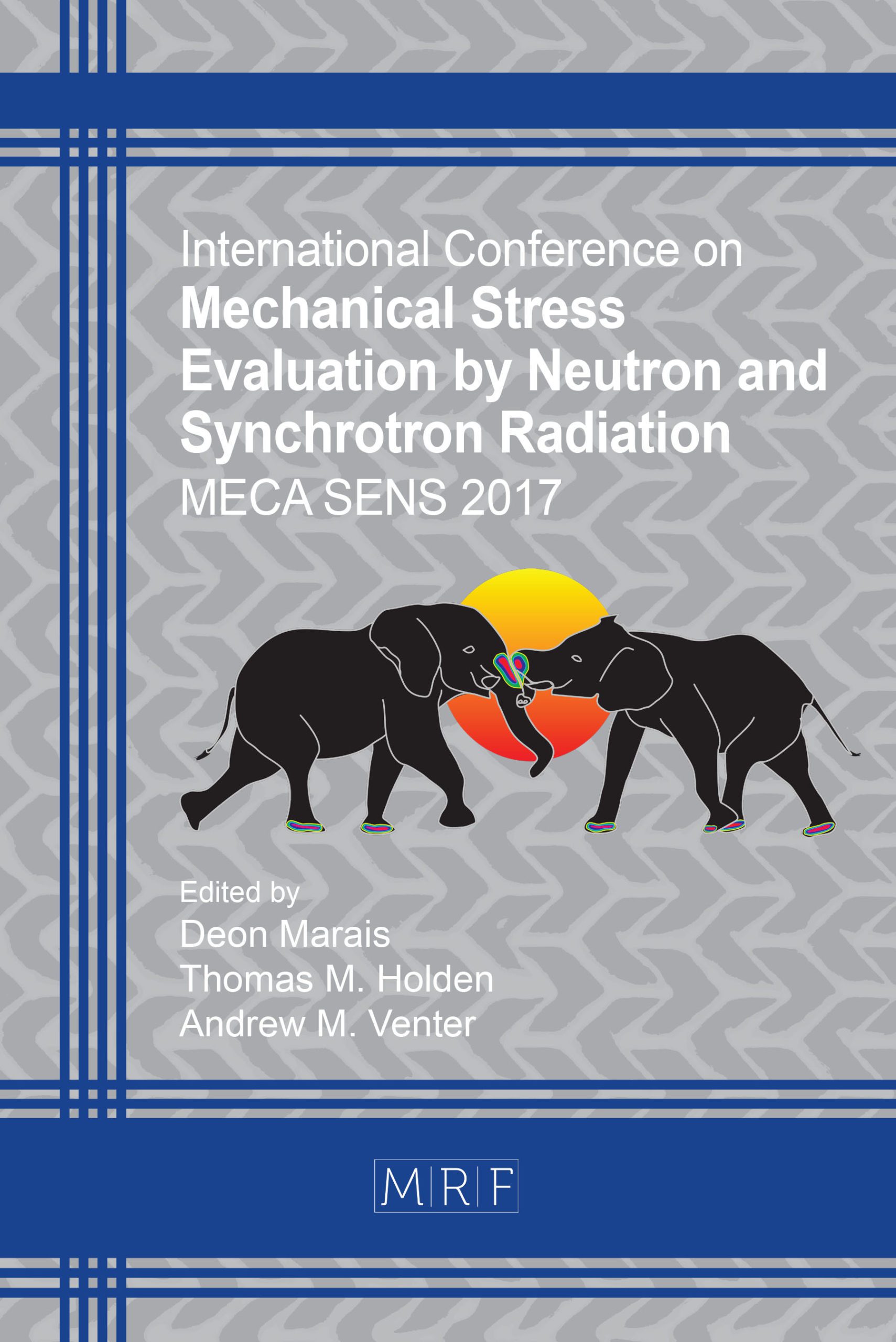Alignment and Calibration Procedures of the Necsa Neutron Strain Scanner
D. Marais, A.M. Venter, V. Luzin
download PDFThe alignment and calibration of neutron strain instruments directly affect the reliability and accuracy of neutron stress experiments. Procedures for the purpose of instrument optimization and characterization were established at Necsa’s angular dispersive neutron strain scanner but may also be applicable to other diffraction instruments. Attention is given to the following aspects: sample table center of rotation, horizontally focusable multi-wafer silicon single crystal monochromator, neutron area detector offset and the instrument gauge volume.
Keywords
Neutron Diffraction Instrument, Strain Scanner, Alignment and Calibration
Published online 4/20/2018, 6 pages
Copyright © 2018 by the author(s)
Published under license by Materials Research Forum LLC., Millersville PA, USA
Citation: D. Marais, A.M. Venter, V. Luzin, ‘Alignment and Calibration Procedures of the Necsa Neutron Strain Scanner’, Materials Research Proceedings, Vol. 4, pp 143-148, 2018
DOI: http://dx.doi.org/10.21741/9781945291678-22
The article was published as article 22 of the book
![]() Content from this work may be used under the terms of the Creative Commons Attribution 3.0 licence. Any further distribution of this work must maintain attribution to the author(s) and the title of the work, journal citation and DOI.
Content from this work may be used under the terms of the Creative Commons Attribution 3.0 licence. Any further distribution of this work must maintain attribution to the author(s) and the title of the work, journal citation and DOI.
References
[1] A.M. Venter, P.R. van Heerden, D. Marais and J.C. Raaths, MPISI: The neutron strain scanner Materials Probe for Internal Strain Investigations at the SAFARI-1 research reactor, Physica B, In press. https://doi.org/10.1016/j.physb.2017.12.011
[2] G.A. Webster and R.W. Wimpory, (Eds.), Polycrystalline materials determination of residual stresses by neutron diffraction. Geneva: ISO, Technology Trends Assessment. (ISO/TTA3), 2002, pp. 29-37.
[3] Sylvac. Instructions for use – Dial Gauge S229. www.sylvac.ch Date of access: 14 May 2013 (2005).
[4] S. Flemming, Development of a distributed client server of system for the fully automatic instrument adjustment of a neutron diffractometer for residual stress analysis, Technische Fachhochschule Berlin, Berlin, 2012.
[5] H. Heer, M. Könnecke and D. Maden, The SINQ instrument control software system, Physica B, 241-243 (1998) 124-126. https://doi.org/10.1016/S0921-4526(97)00528-0
[6] P.C. Brand and H.J. Prask, New methods for the alignment of instrumentation for residual-stress measurements by means of neutron diffraction, J. Appl. Cryst. 27 (1994) 164-176. https://doi.org/10.1107/S0021889893007605
[7] A. Kelly and K.M. Knowles. Crystallography and Crystal Defects. 2nd ed. West Sussex, UK: John Wiley & Sons, Ltd. 2012. https://doi.org/10.1002/9781119961468
[8] M.W. Johnson and M.R. Daymond. An optimum design for a time-of-flight neutron diffractometer for measuring engineering stresses, J. Appl. Cryst. 35 (2001) 49-57. https://doi.org/10.1107/S002188980101891X































